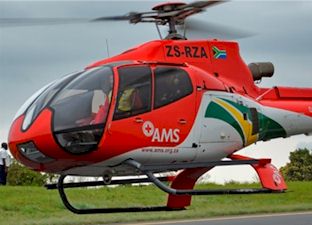College of Emergency Care- KwaZulu Natal
| KwaZulu Natal Emergency Medical Services (KZN EMS) is one of the three core functions within the Department of Health, which aims to provide a quality, efficient, professional and caring emergency medical and rescue service throughout the Province of KwaZulu-Natal. KZN EMS is a specialized 24hrs ambulance service catering for the needs of the people of KZN, from the city centers to the most rural areas. There are several functions provided by KZN EMS. |
|
Emergency Operations :Emergency Operations is the largest section of EMS where Medical emergencies are responded to and patients are treated in the pre-hospital field before being transported to hospital for further care through the utilisation of specialised vehicles, equipment and skilled paramedics. KZN EMS provides a rescue service which includes rescuing people who are entrapped in a motor vehicle after an accident to falling down a cliff. 4×4 rescue vehicles have been converted to carry specialised equipment, including the “jaws of life” and emergency lighting which is required to perform medical rescues. The weight and bulk of this equipment is taken into consideration when converting these vehicles. These vehicles are not designed to transport patients but have medical equipment on board and are staffed by medical personal that have a medical and rescue qualification. |
 |
Hospitals are staffed and equipped to provide different levels of care, KZN EMS transfers patients in between hospitals depending on the patients’ medical needs. There is no decrease in the level of care provided to the patients during the transfer as appropriately trained paramedics provide continued medical care during the transfer.There are several different qualifications of medical staff who work on ambulances. This starts with:
Basic Life Support (BLS)
Intermediate Life Support (ILS)
Emergency care technician (ECT)
Advanced Life Support Paramedic
South African advanced life support paramedics are in high demand throughout the world due to the nature of training and skills. Training can be done either by being an ILS (with a 1000 hours of experience) and then attending a one year training course to be a Critical care Assist or attend certain Universities of Technology who offer the four year long Bachelor of health sciences. Emergency Management CentresEach district has an Emergency Management Centre where emergency calls are received, triaged (the calls are placed on order of medical priority, not first come, first serve) and then an ambulance is dispatched to the case. The control rooms play a vital function as this is where the emergencies are coordinated.
KZN EMS can be contacted by dialling 10177 Advice to people when phoning any emergency number:
|
|
Patient Transport ServicesThis is a large component of EMS. Its main function is to transport patients, normally with chronic illnesses, who are not ill enough to require to be transported in an ambulance but who require transport for non-emergency referrals between Hospitals and from PHC Clinics to Community Health Centres and Hospitals. These trips are planned and the patients attend prearranged appointments, after being referred to a particular clinic. The appointment letters are normally used to book places on the busses. The patients are seen as out patients at these hospitals and are transported back after their appointments. Vehicles ranging from mini busses to large 60 seat buses are used to transport these clients. Some of the buses have had conversions done to allow for stretchers to be lifted into the bus by an hydraulic ramp. These buses are able to carry seated, wheelchair and stretcher patients. There is basic medical equipment on board and there is medical staff other than the driver attending to and monitoring patients during the trips. |
 |
|
|
Types of vehicles used by KZN EMSDue to the different functions provided by KZN EMS there is are several different types of vehicles used. These include:
College of Emergency CareThe KZN EMS collage of emergency care (COEC), provides in service training for KZN EMS staff. The training ranges from routine training updates to training for intermediate life support and emergency medical technicians. Courses in medical rescue are also conducted. There are two campus’s one in Durban and the other in Pietermaritzburg. District trainers are deployed to various bases in the province to do in service training for EMS staff in those areas. For further information on EMS, please contact Robert McKenzie, media liaison for EMS on [email protected] |
|
Related Posts
- List of Nursing Colleges in Cape Town
- List of Nursing Colleges in Durban
- Nursing Intake 2021 – 2022 In South Africa
- North West Department of Health Nursing Learnerships
- Polokwane Department Of Health Nursing Learnerships
- Kwa Zulu Natal Department of Health Nursing Learnerships
- Western Cape College of Nursing
- Medi Clinic Nursing Learnerships
- Mediclinic Nursing Learnerships In South Africa
- Paying Nursing Learnership At KwaZulu/Natal
- Department of Health Nursing Learnerships
- GP Dept Of Health Nursing Learnership Programme
- Netcare Nursing Learnerships
- Durban Nursing Learnership
- Eshowe Hospital Nursing School
- St Aidans Hospital Nursing School
- Manguzi Hospital Nursing School
- Nkonjeni Hospital Nursing School
- Nkandla Hospital Nursing School
- Piet Retief Hospital Nursing School
 Air Ambulance
Air Ambulance
